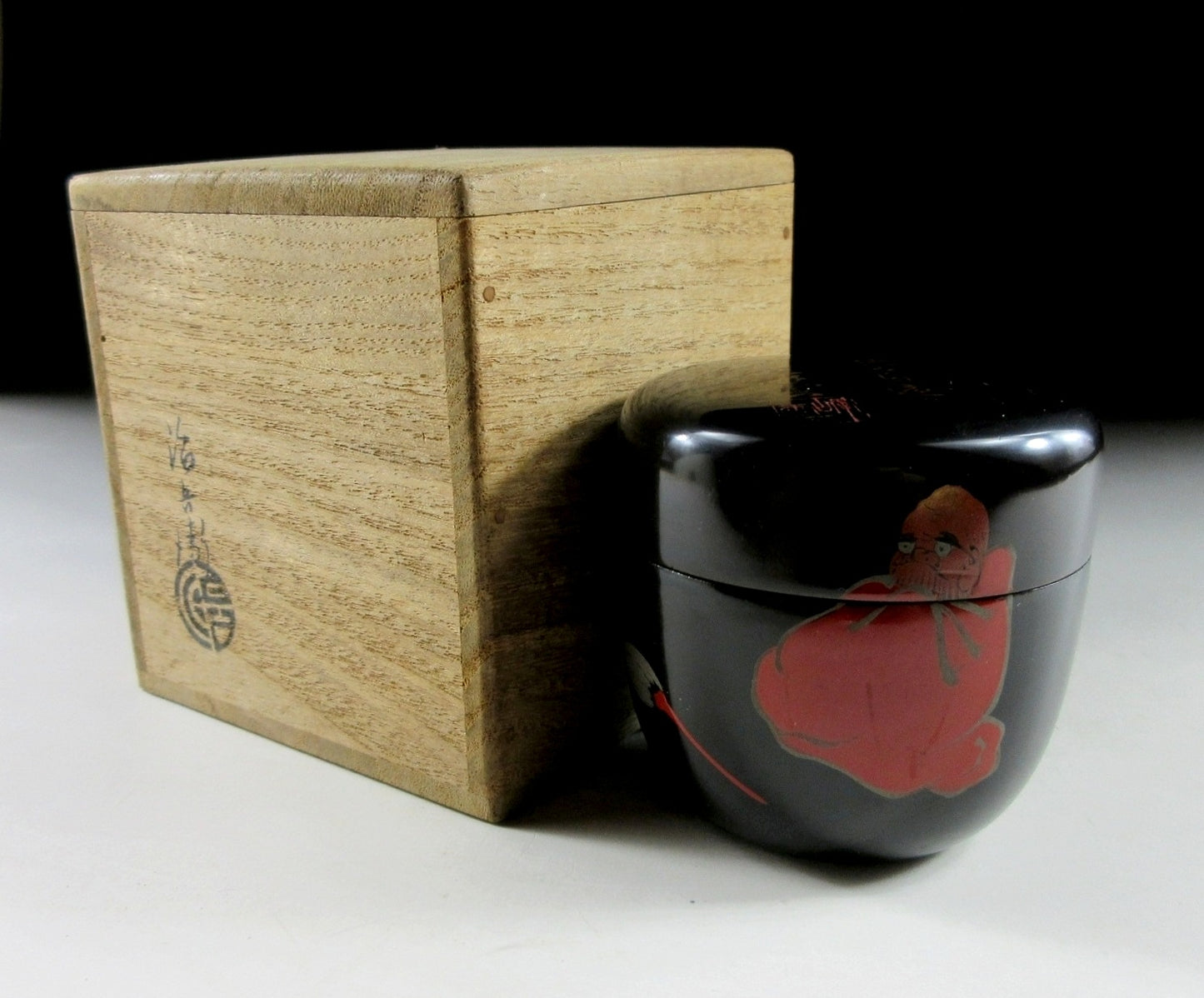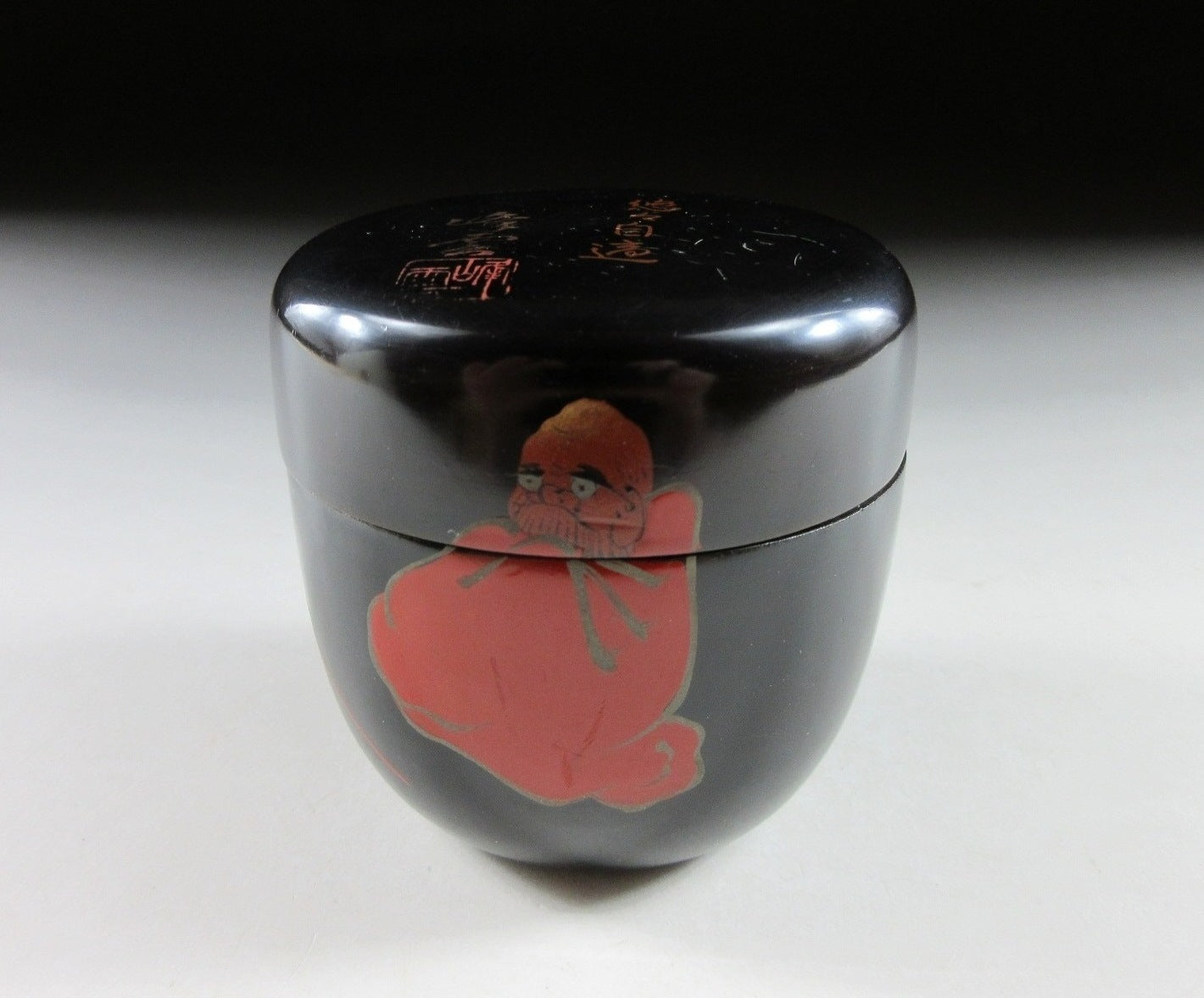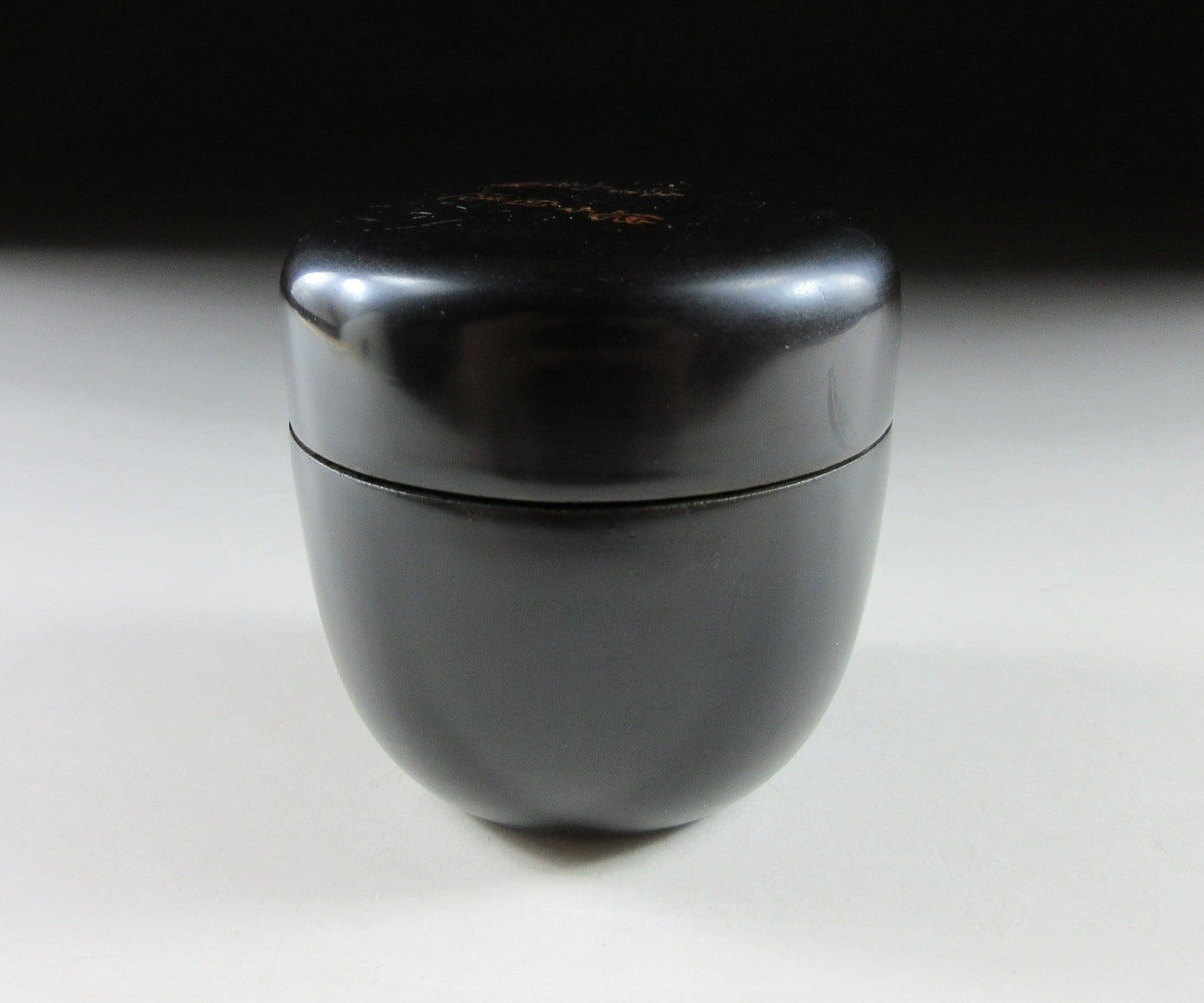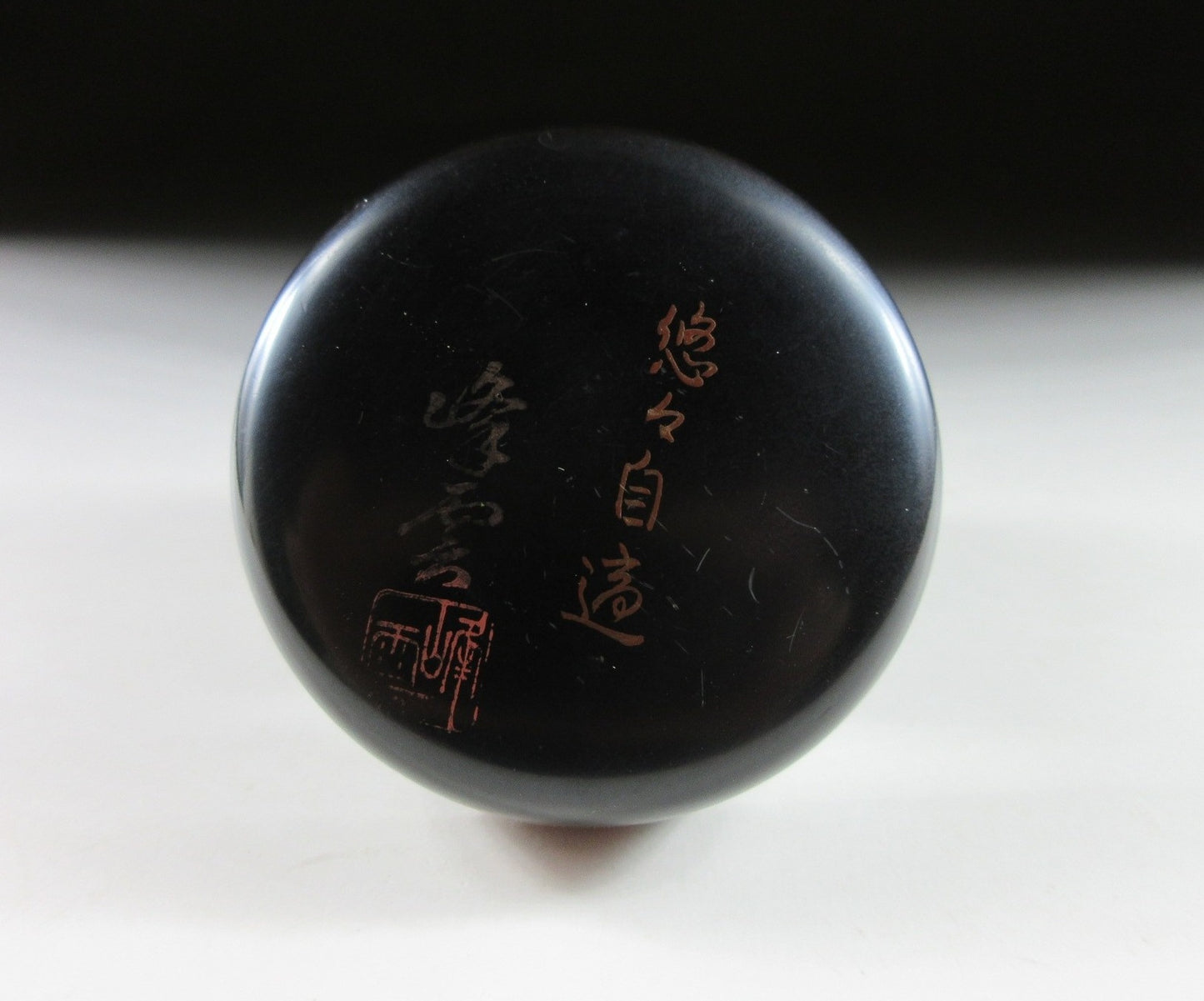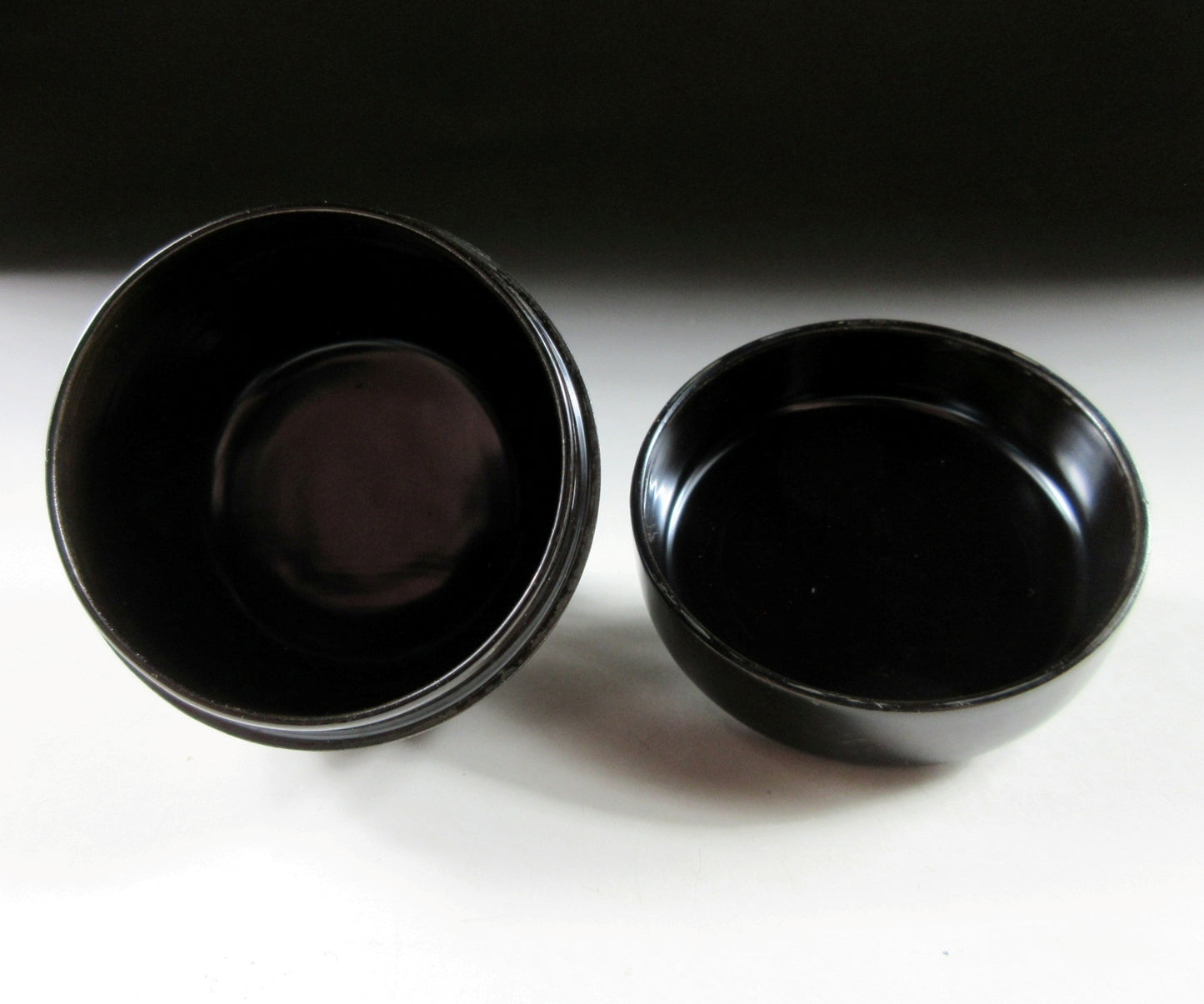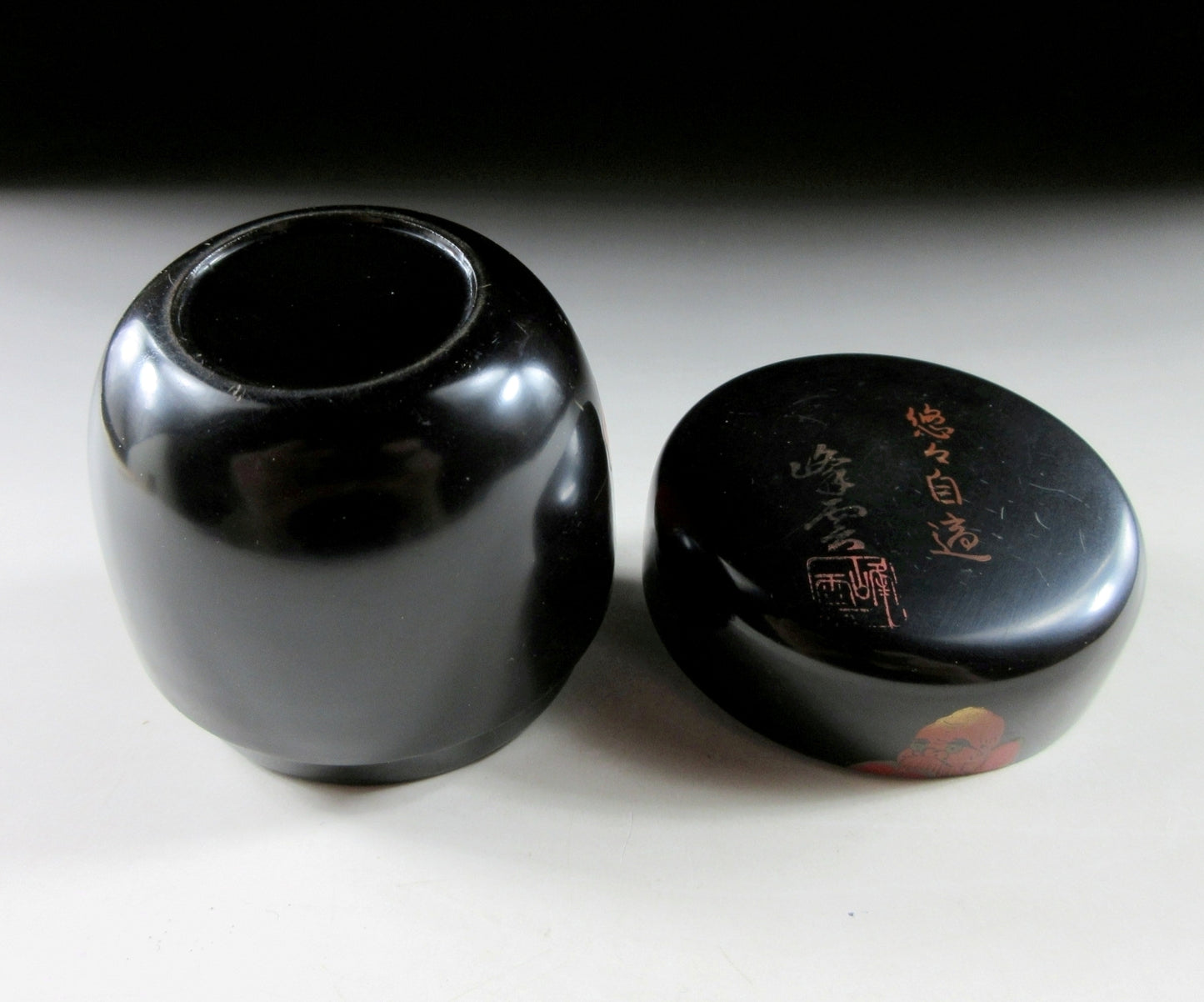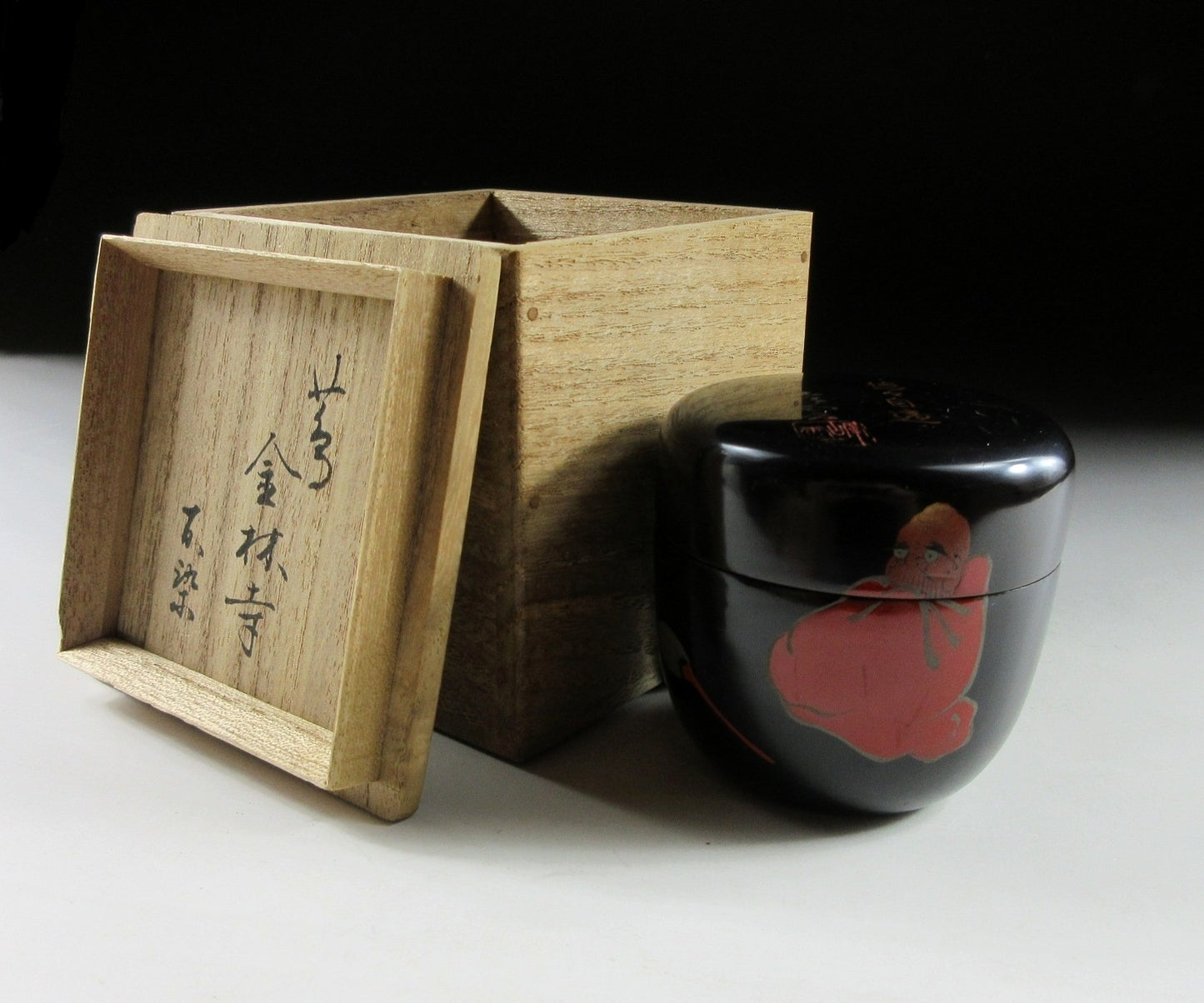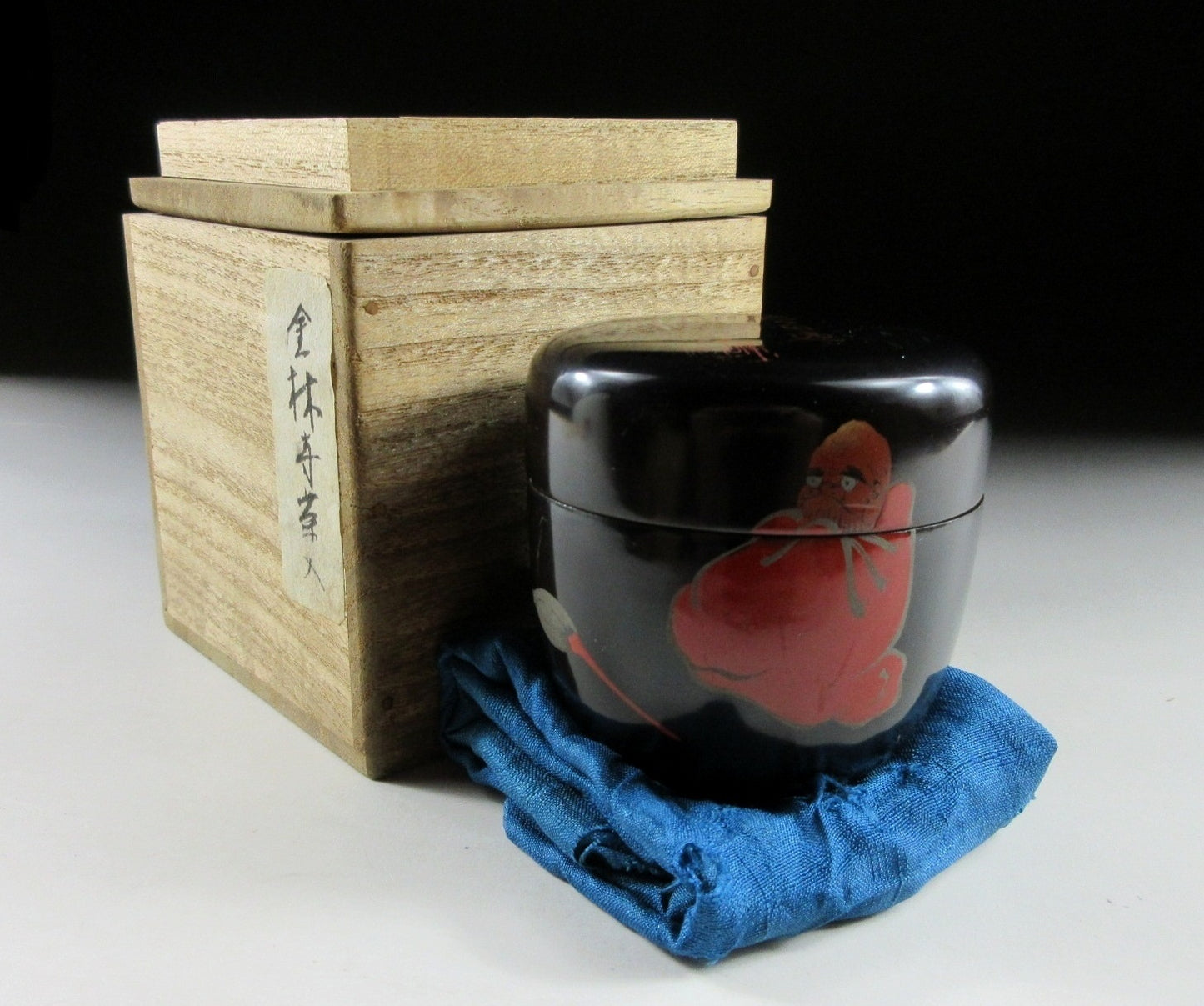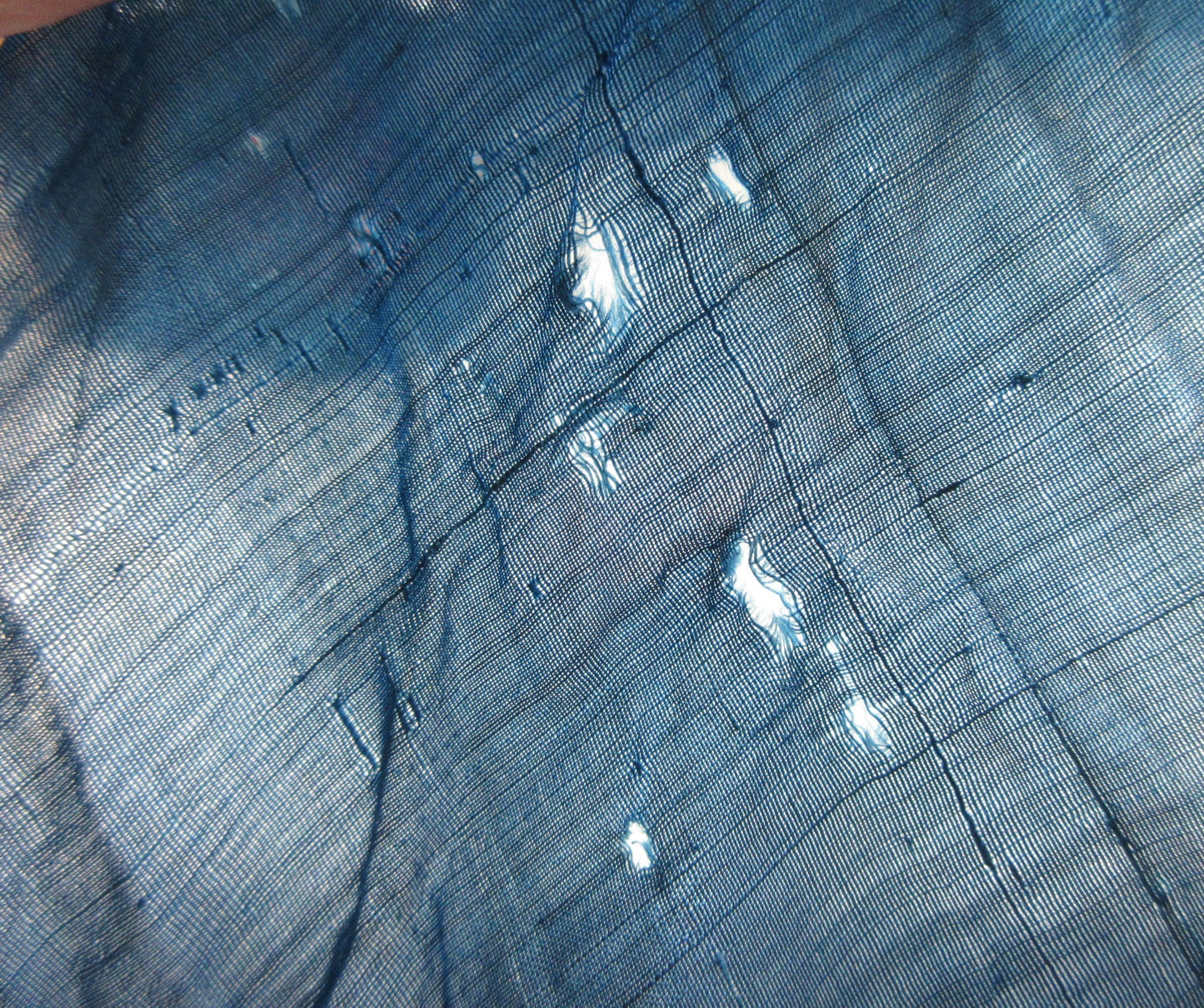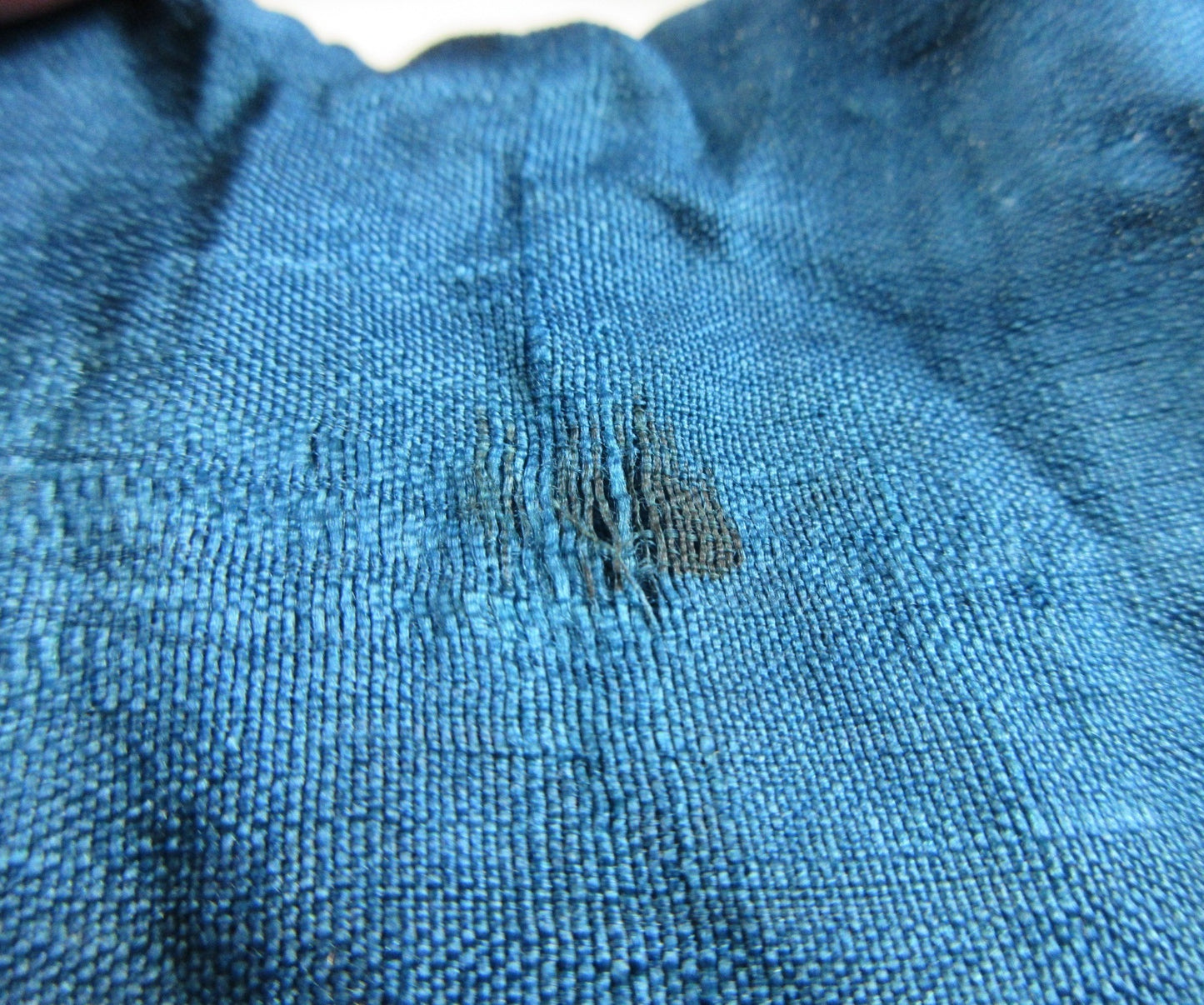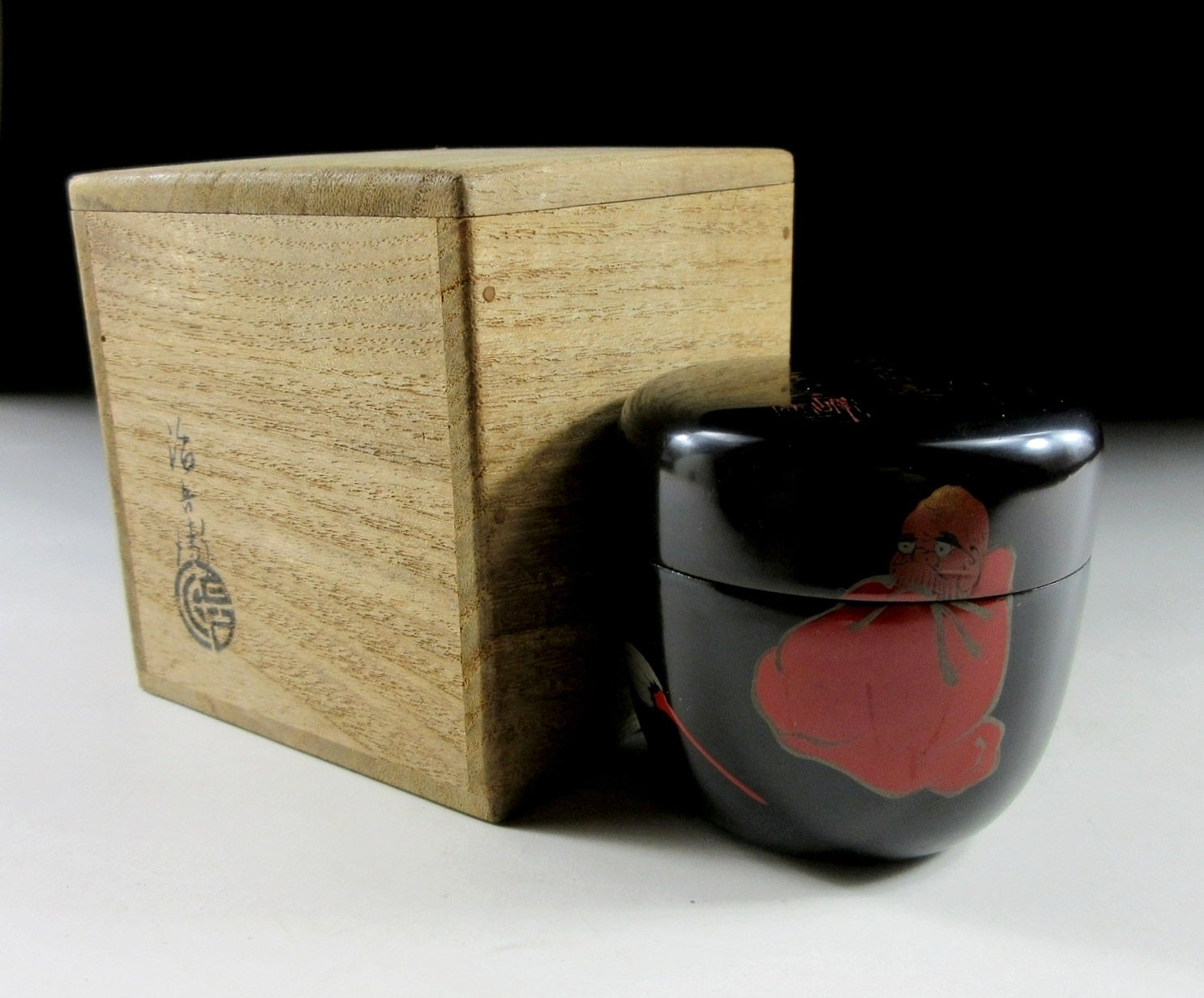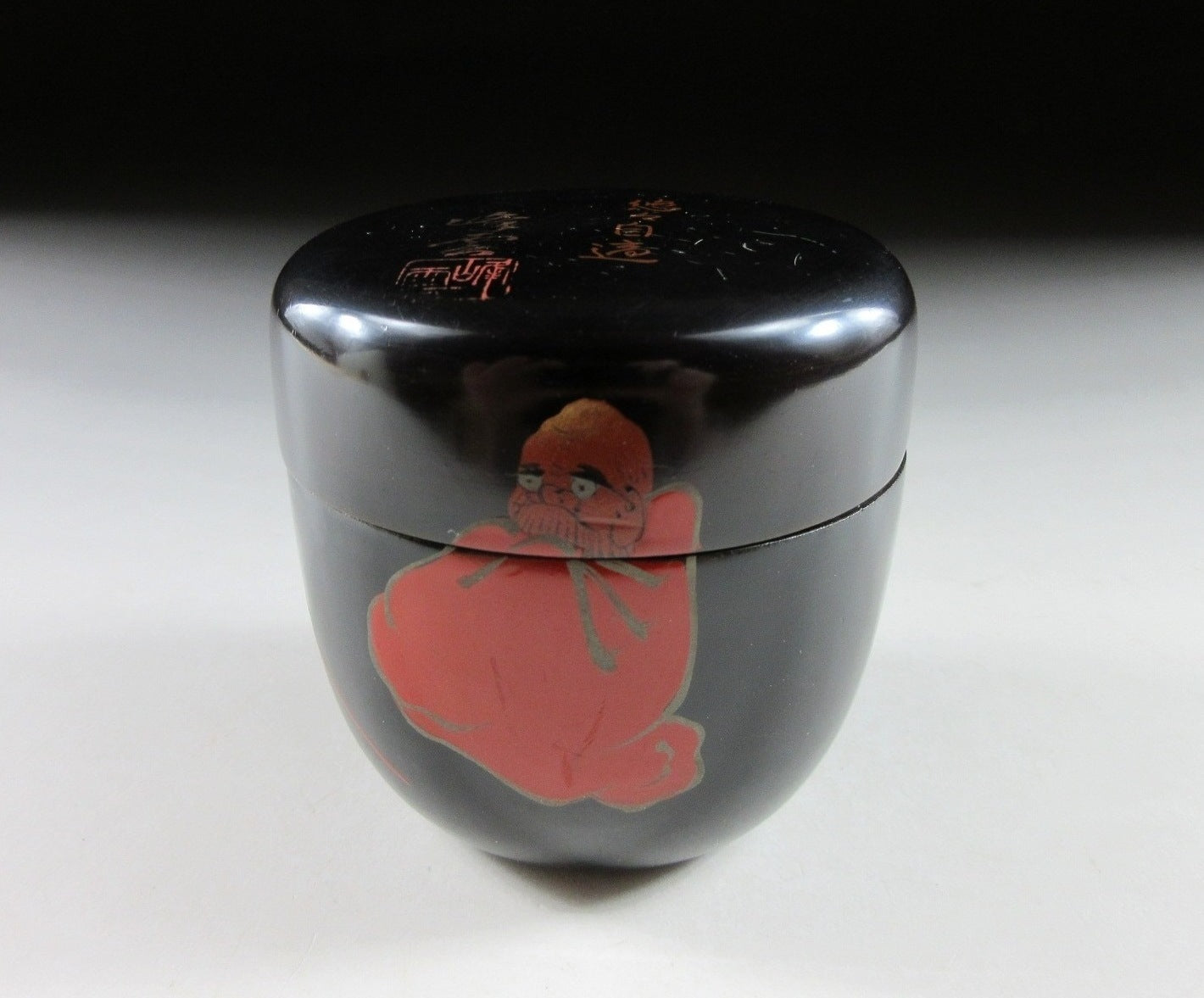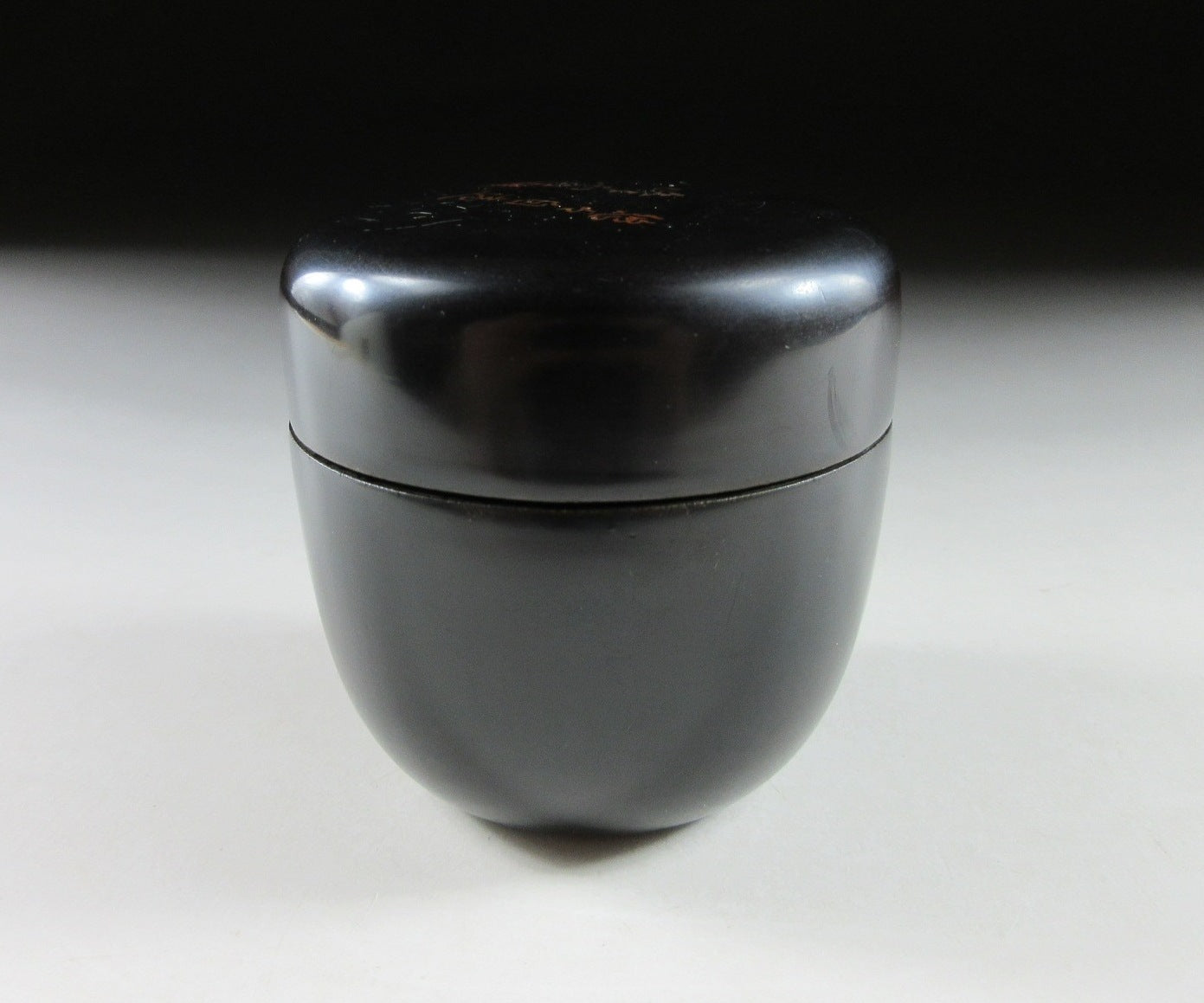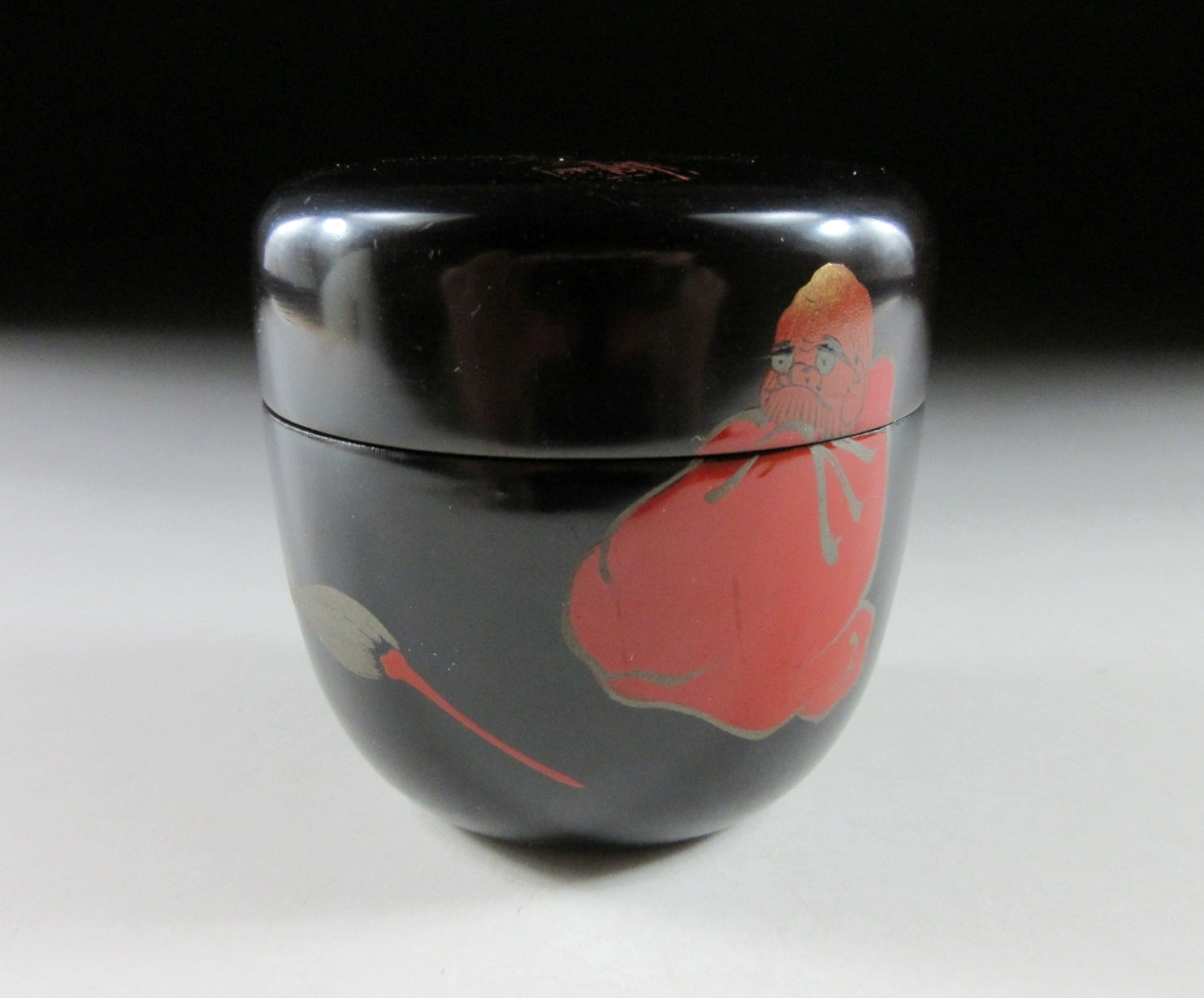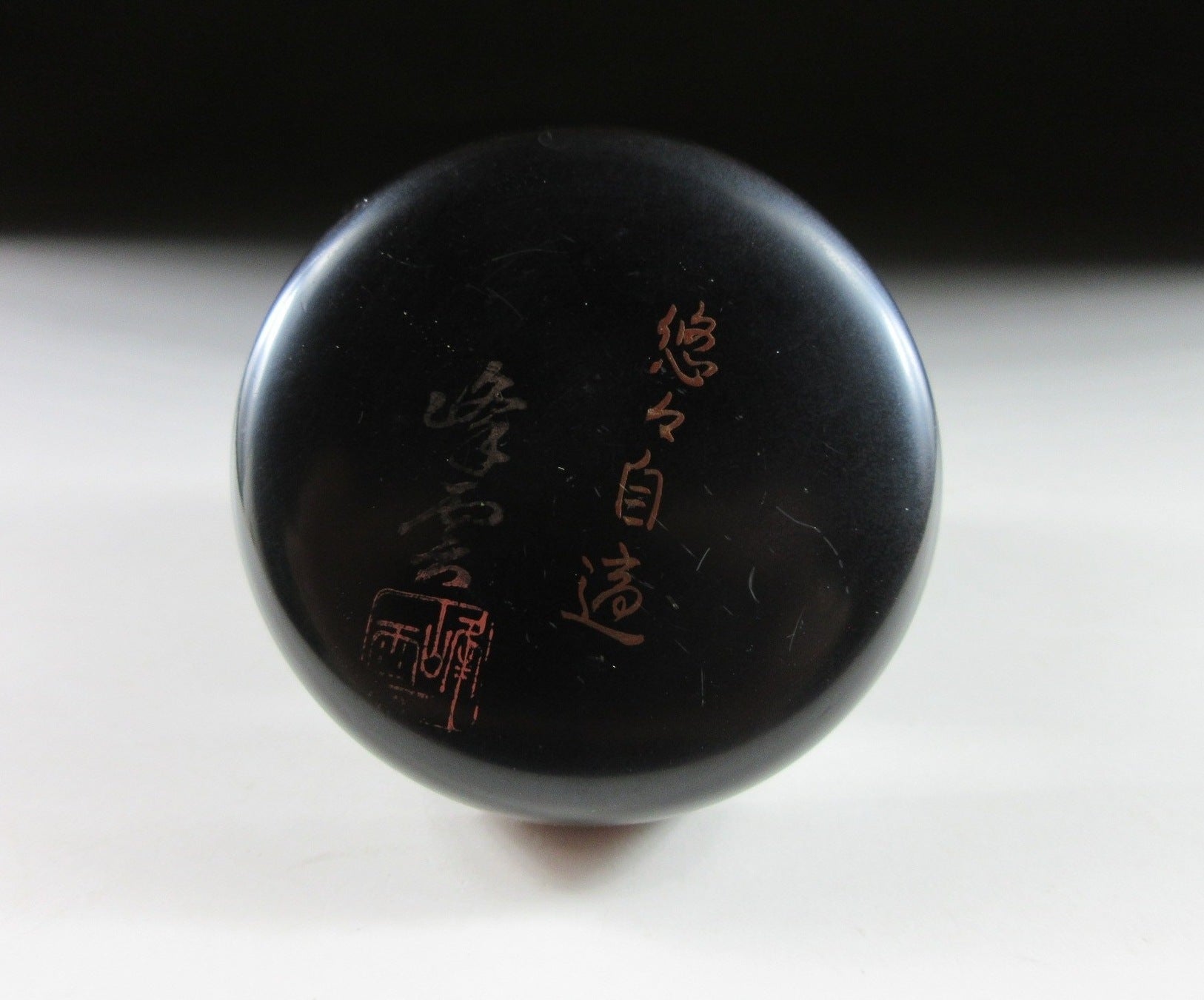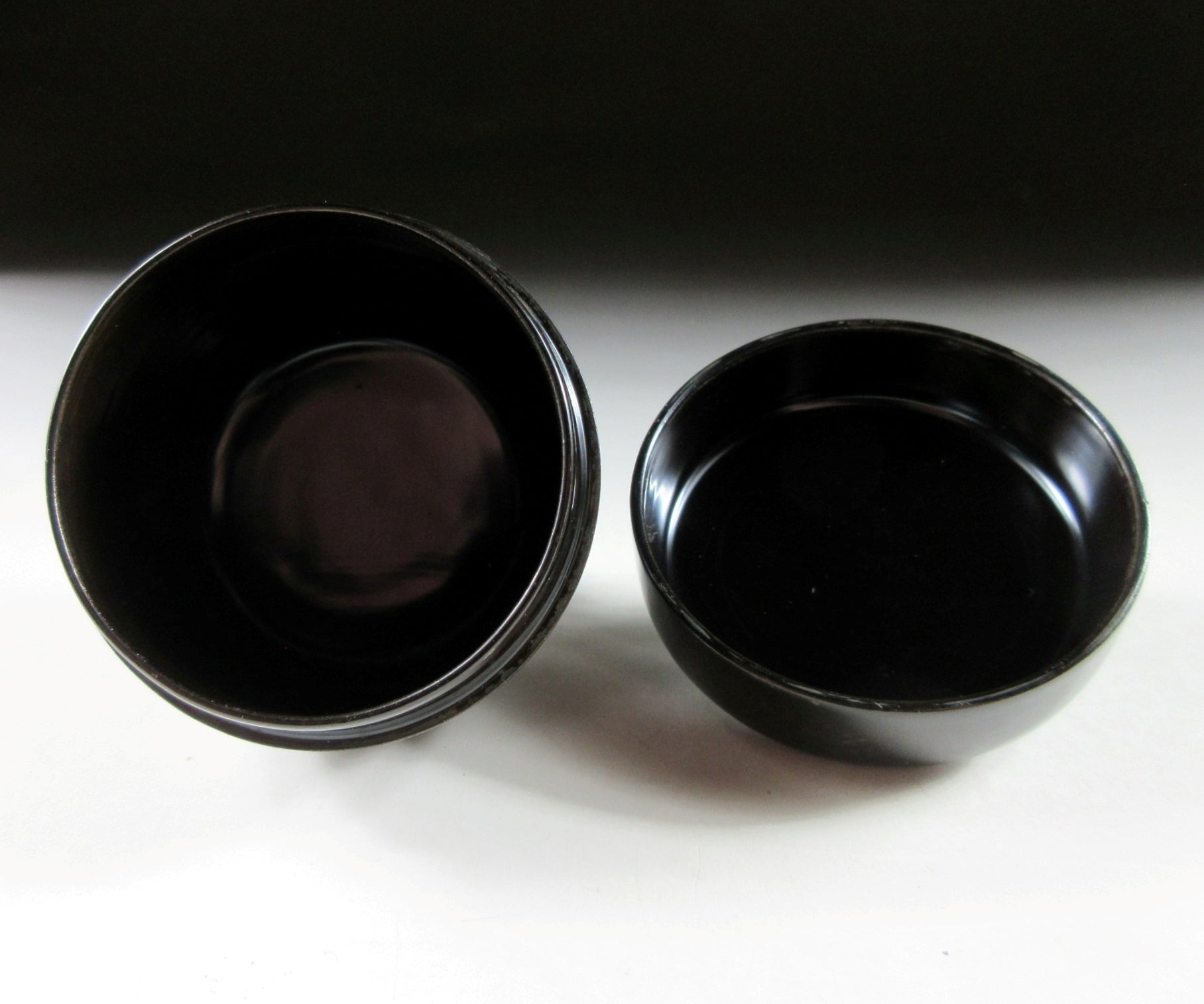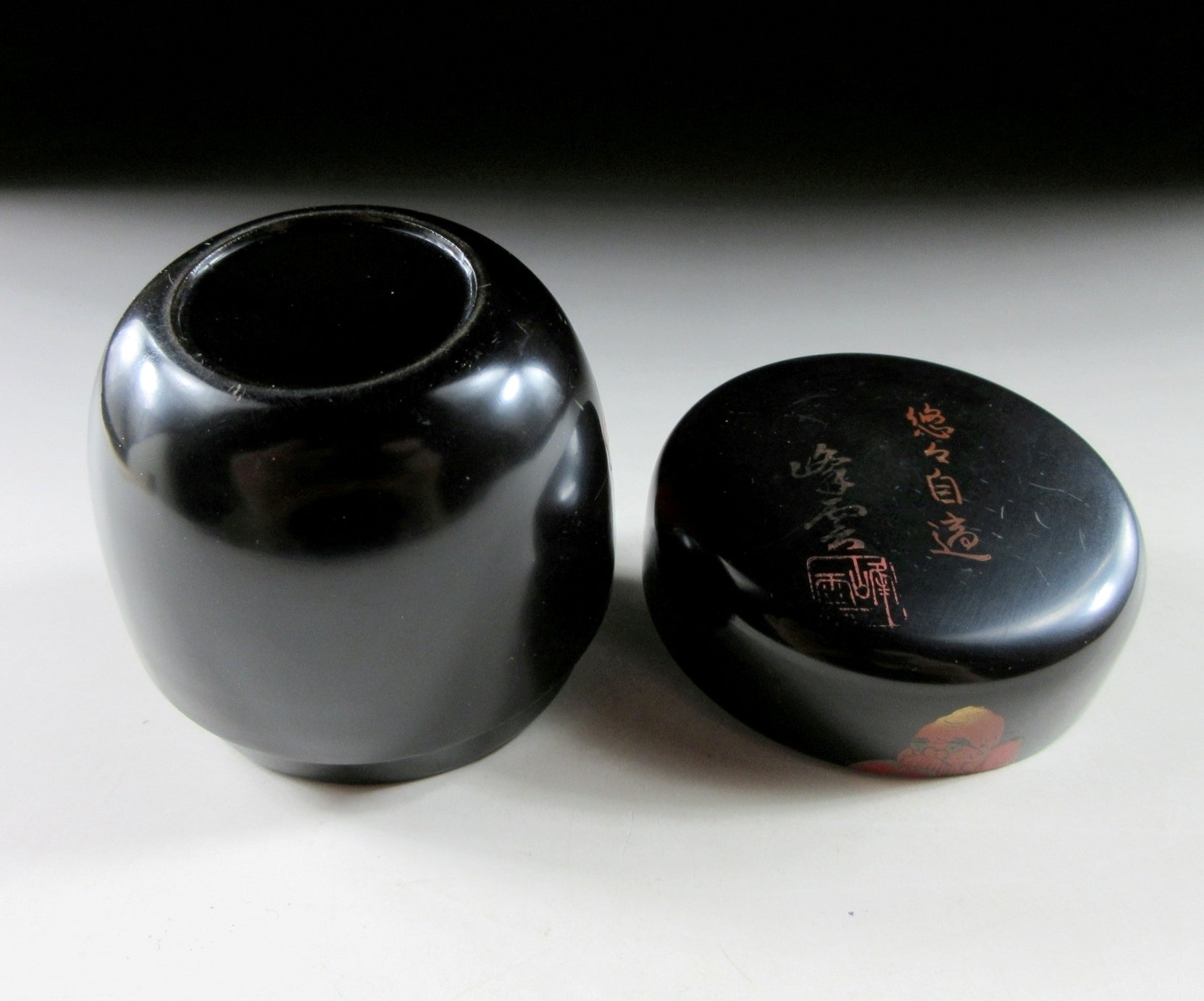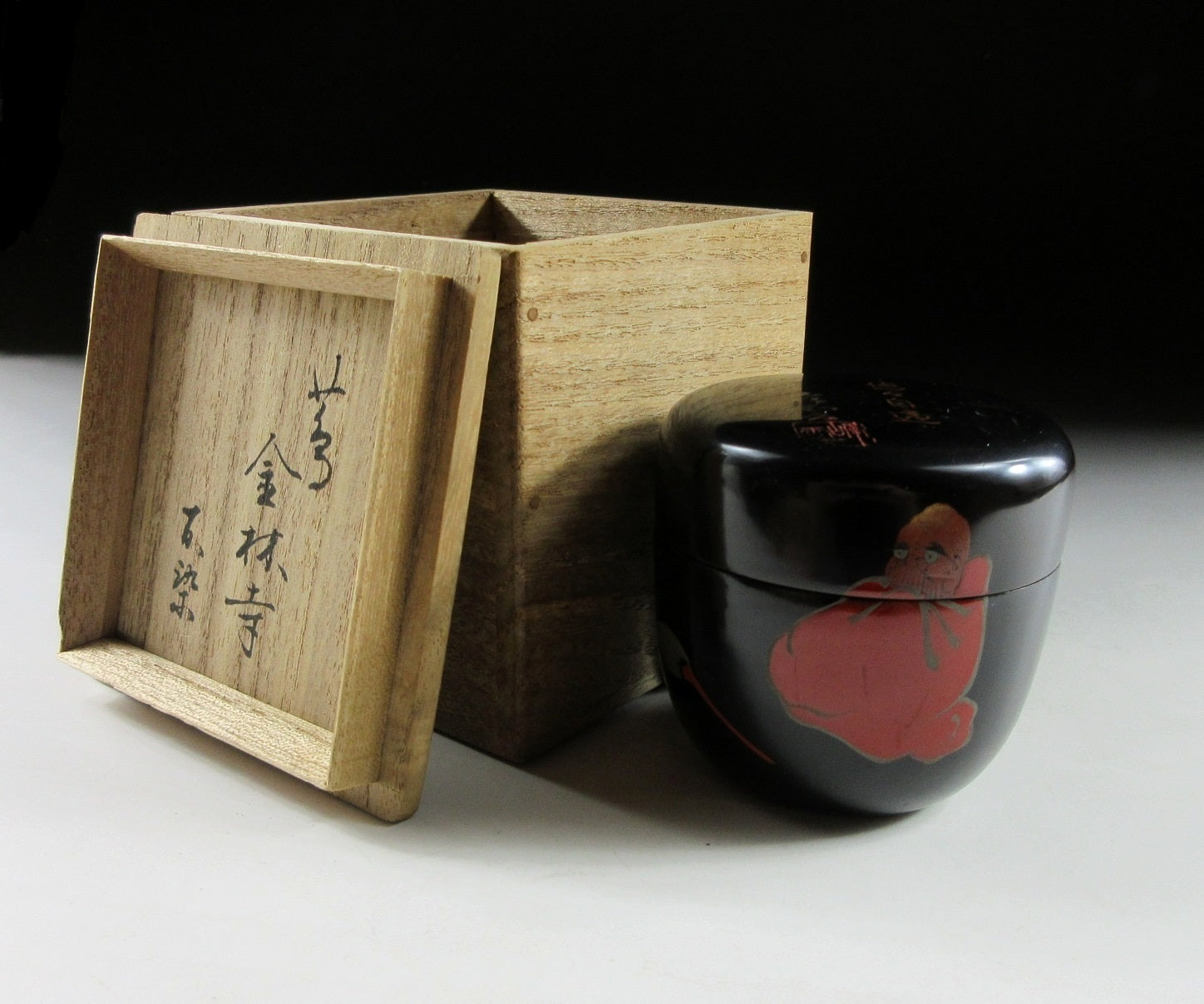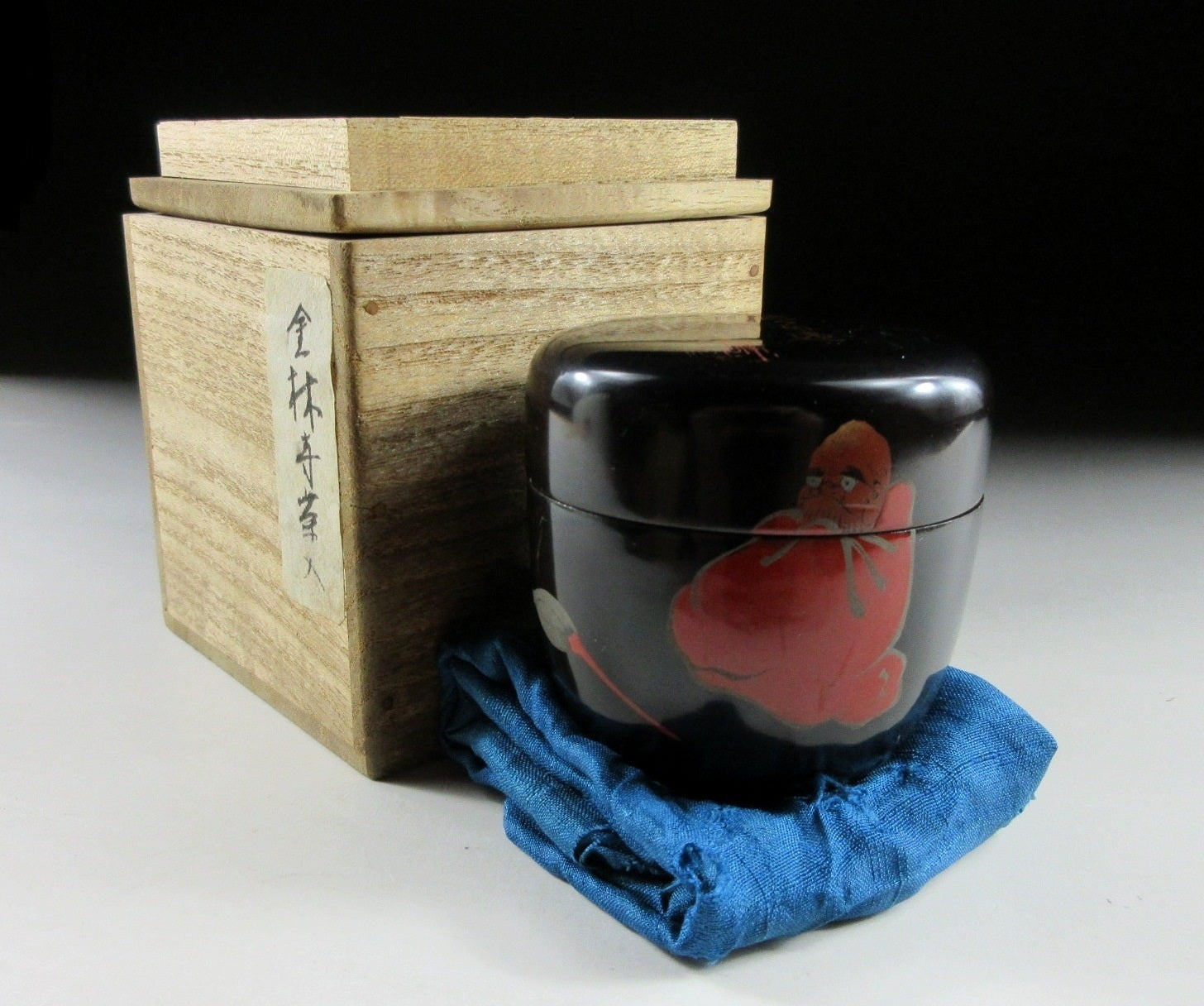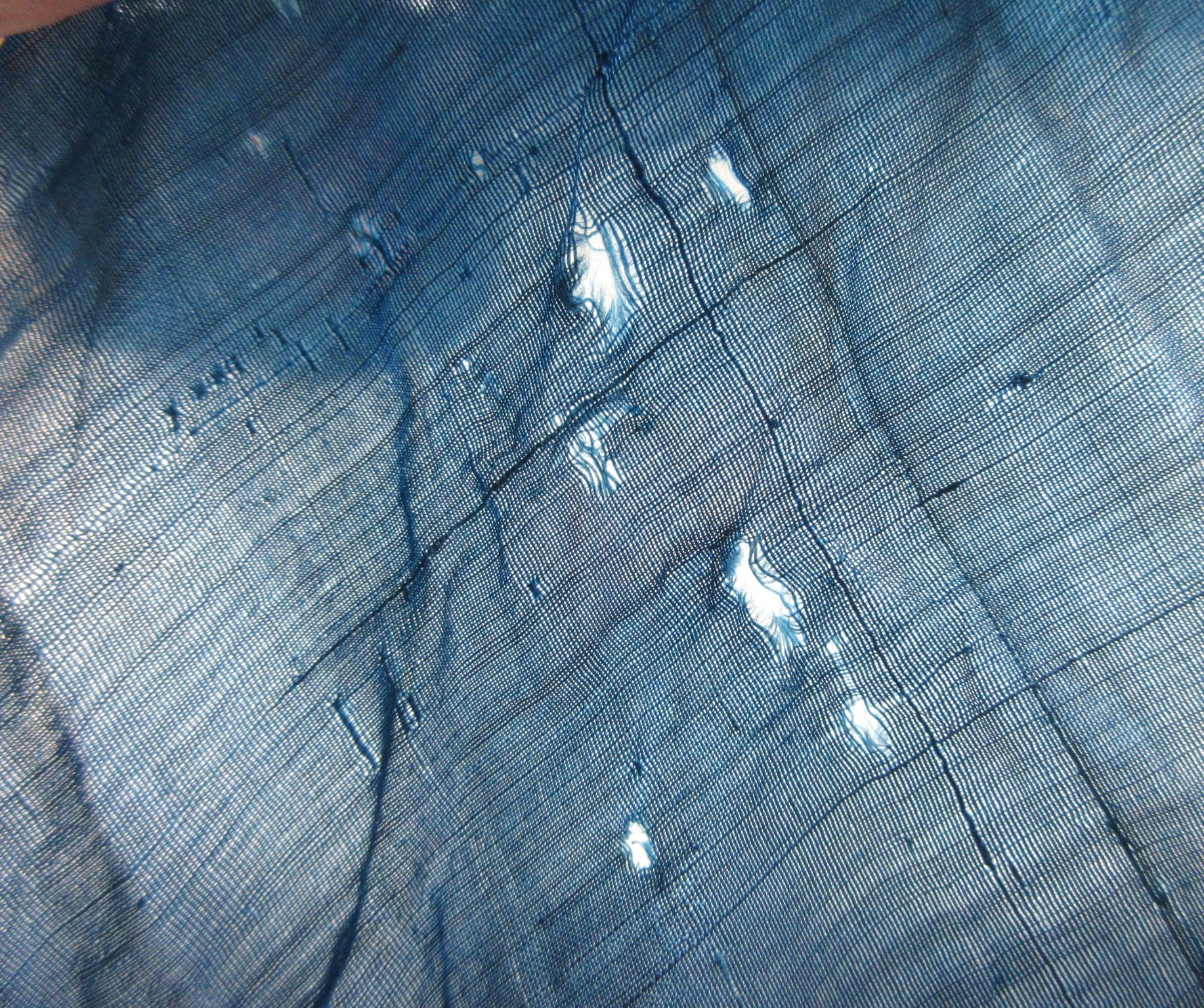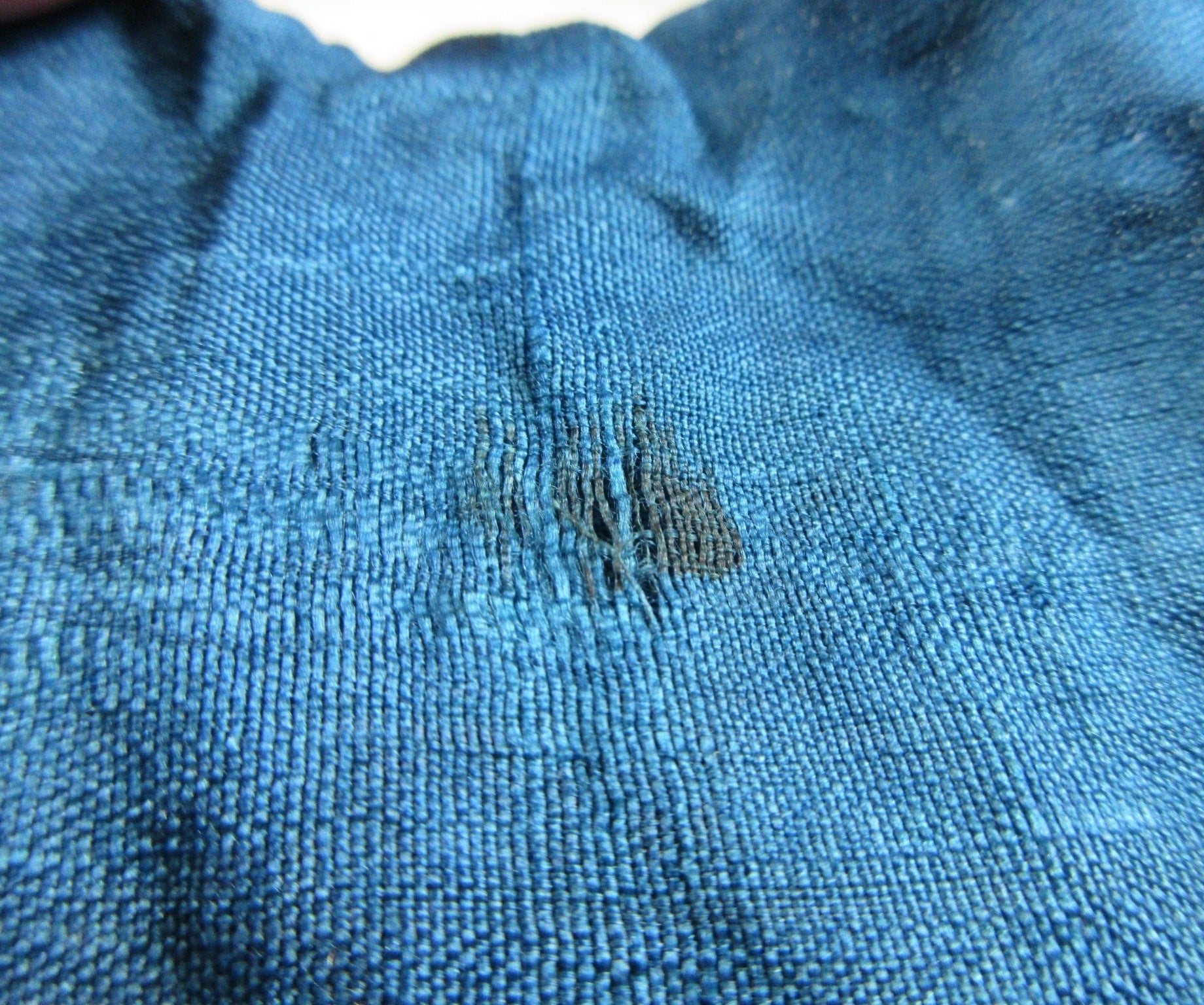Kominka Zakka
Inscribed Konrinji Temple Natsume
Inscribed Konrinji Temple Natsume
Couldn't load pickup availability
*SHIPPING OPTIONS VARY DEPENDING ON THE DESTINATION, PLEASE SCROLL TO THE END OF THIS LISTING FOR MORE DETAILS.
This listing is for an urushi lacquerware natsume made around 50-60 years ago. It is made of wood and the front is decorated with a makie image of Daruma and a flywhisk. The flywhisk has a double meaning, not only is it a practical tool for swatting away mosquitoes, but it has also come to symbolize the swishing away of delusive thoughts in Zen Buddhism. The writing on the right side of the lid reads as ‘yuyu jiteki’. ‘Yuyu’ means to be relaxed and calm, and ‘jiteki’ means to live as you please. Together this phrase can mean to withdraw from the secular world and live a leisurely life, or to live as one pleases without being bothered by worldly things. It can also be used to refer to a calm life after retirement. The underside of the lid is inscribed ‘Konrinji Temple’, a Shingon Buddhist temple of the Koya-san lineage located in the mountains of eastern Kochi Prefecture. The exact date of construction is unknown, but it dates back as far as the late Heian period. According to legend it was built in a single night by the priest Kobo Daishi. Kobo Daishi (774-835CE) was a Buddhist monk and the founder of Shingo Esoteric Buddhism. He is known posthumously as Kukai, and he was responsible for the establishment of the Koya-san temple settlement in Wakayama Prefecture. This piece comes with its original signed wooden storage box, as well as a blue wrapping cloth for when it’s not in use.
Urushi lacquerware refers to products that have been coated in natural lacquer collected from urushi trees. The process for lacquering items is long and very labour intensive, each item requiring multiple layers of lacquer that may take anywhere from six months to two years to complete. Heat and humidity are required to dry lacquer evenly and consistently, so Japan’s rainy season and summer months are ideal for this process. Urushi products are not only beautiful but also strong.
Makie refers to a crafting technique in Japan from presumably the Nara period. Craftsmen sprinkle gold or silver metal powder over successive layers of lacquer before it dries. Traditionally pure gold powder, pure gold flakes, and pure silver powder were used to complete motifs on lacquerware. The process of applying gold or silver powder requires both time and skill. At first the craftsman sketches out the design. He or she then adds charcoal powder to the base of the relief, and then a layer of urushi lacquer. Gold or silver powder is sprinkled over the wet lacquer, which acts as an adhesive. The surface is polished and then the process is repeated over and over until a beautiful raised pattern appears.
Sizes
Box: H.9.6cm (3.7”) x 9cm (3.5”) x 9cm (3.5”)
Natsume: H.6.2cm (2.4”) x Dia.6.7cm (2.6”)
Condition
It’s in very good condition aside from slightly dull lacquer, some light scratches (especially on the lid), and slight wear on the bottom. There are holes in the blue wrapping cloth, and there’s a wood borer hole in the box.
THESE ARE SHIPPING ESTIMATES BASED ON THE CURRENT GLOBAL SITUATION
**Germany, France, Greece, Spain, Poland, Austria, Slovakia, Lithuania, Slovenia: NO SHIPPING. Very strict and expensive packaging laws in place and we are not licensed to send products to these countries. We have no plan to register at this time because the process is in some cases very expensive and complicated, plus each country has its own set of regulations and application process.
**USA, UK, Canada, Australia, New Zealand, Switzerland, Norway: Airmail Small Packet (approx. 15-28 days). Combined shipping available up to 2kgs for Airmail Small Packet (please send us a message).
**Asia: Airmail Small Packet (approx. 15-21 days). Combined shipping available up to 2kgs for Airmail Small Packet (please send us a message).
**Central Asia, Middle East, South Africa, Brazil, Mexico: EMS Express 10-15 days.
**Russia: No shipping methods available.
Share
